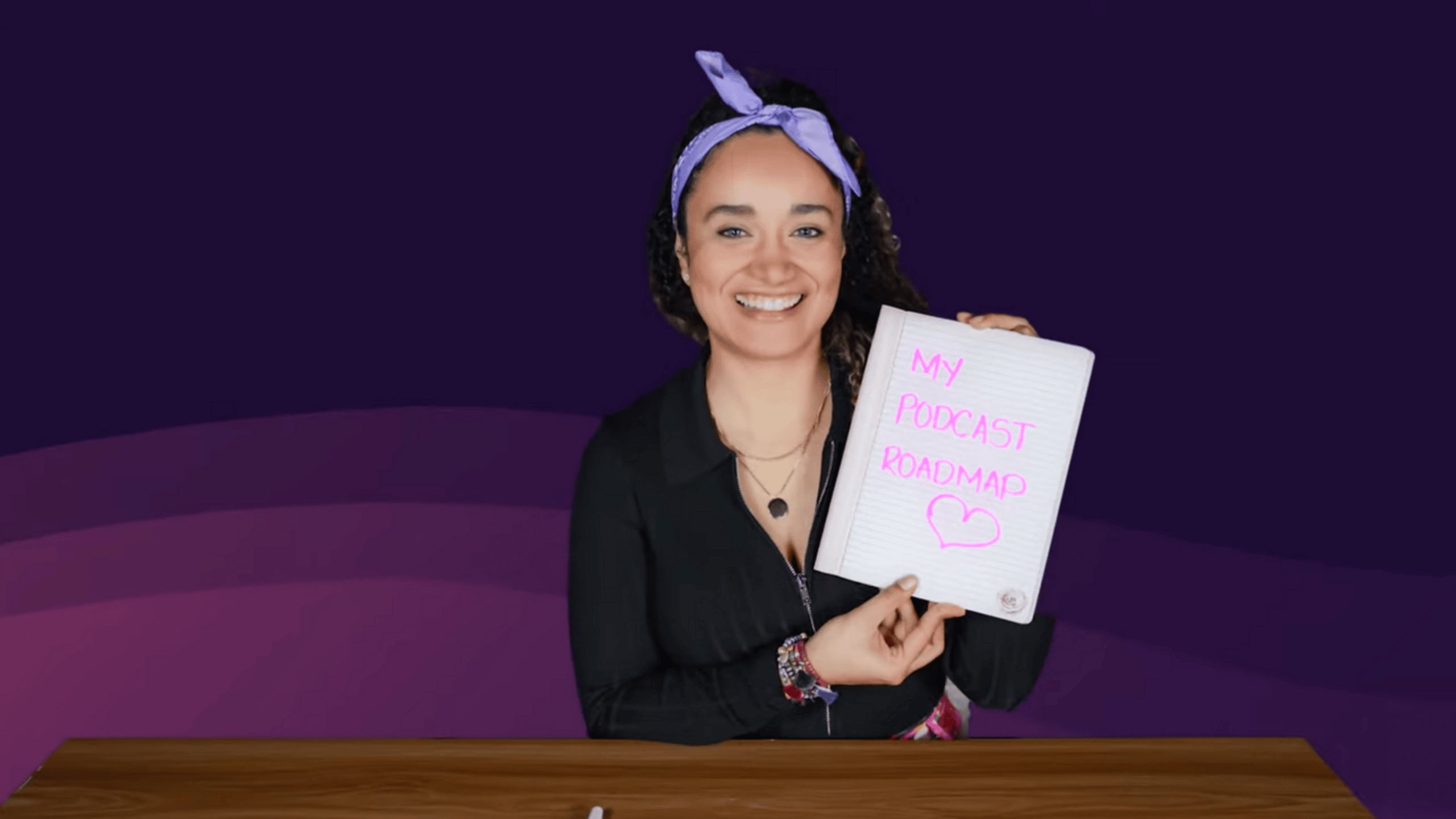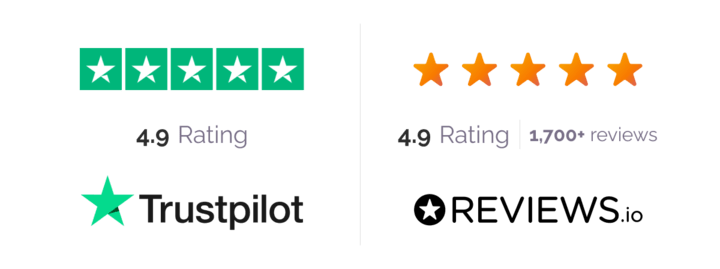Hey there! If you’re here, you’re likely wanting to start a podcast, but don’t know how to put this idea in motion.
In this post, together, we are going to create your own roadmap for launching a new podcast.
You’ll get my best tips for planning, creating, distributing, and promoting a podcast.
I’m Veronica, and I’m an online marketing and podcast coach. I have helped hundreds of people launch and maintain successful podcasts and I’m here to do the same for you.
Podcasting is Exciting – But Don’t Start Recording Yet!
I know! Podcasting is so exciting that you just want to grab that microphone and record ideas you’ve had in your brain for years, and shout it out to the world! I get it!
But slow down, Speedy Gonzalez!
Why? Because the key to having a podcast that performs well is to spend some time in the planning stage.
This is where you develop your podcast idea, choose your audience, and design your podcast on paper.
And we’re going to do just that in step one.
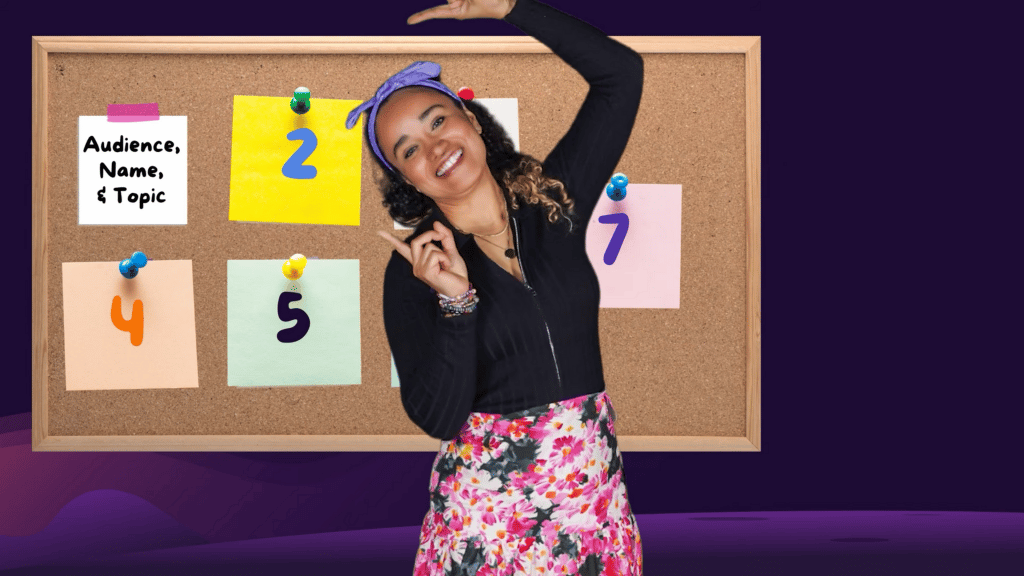
Step One: Pick an Audience, Name, and Topic
Okay, grab that pen and paper and start imagining your future audience.
Here are some example questions to help you define your audience:
- Who am I making this show for?
- Am I making this show for Gen-Xers, Millennials, or GenZs?
- Am I making my show for women over forty going through infertility?
- Am I making this podcast for parents with teenagers?
- Am I making this podcast for first-time home buyers?
- What does this group of people struggle with?
- What are their greatest desires?
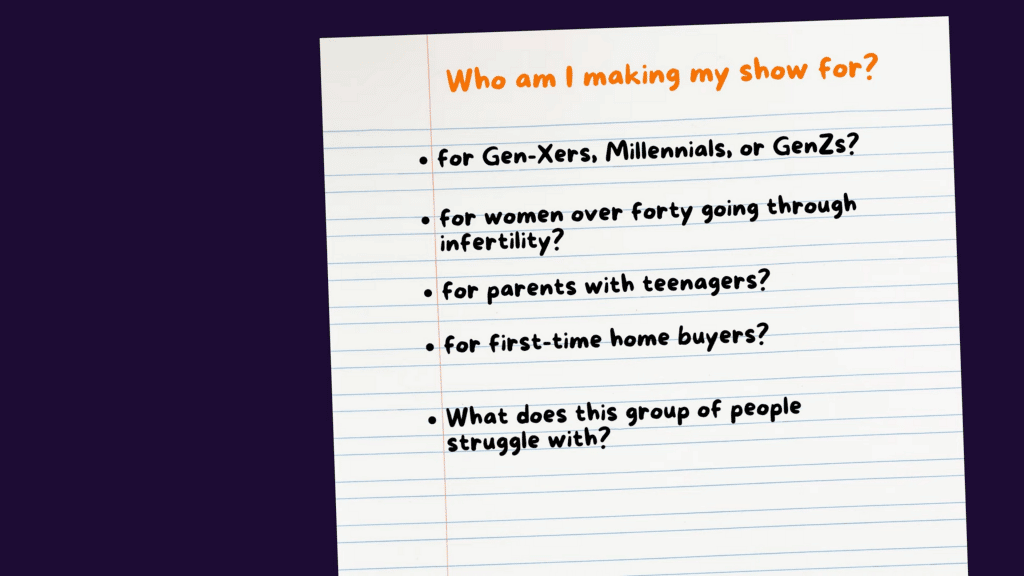
I understand that being this specific may make you feel unsettled because you want to make your show for everybody.
But listen, when you’re speaking to everyone, you end up speaking to no one.
💡Pro Tip: The more specific you are in your message about who you’re making your show for, the faster you will attract listeners.
Your podcast will feel like it was made specifically for them, their needs, and their particular life circumstances.
And that’s the secret combination for an irresistible podcast.
Now let’s talk about your podcast name or title.
Choosing a name for your podcast is going to require some thinking and researching.
Here’s a quick checklist so you don’t make any mistakes:
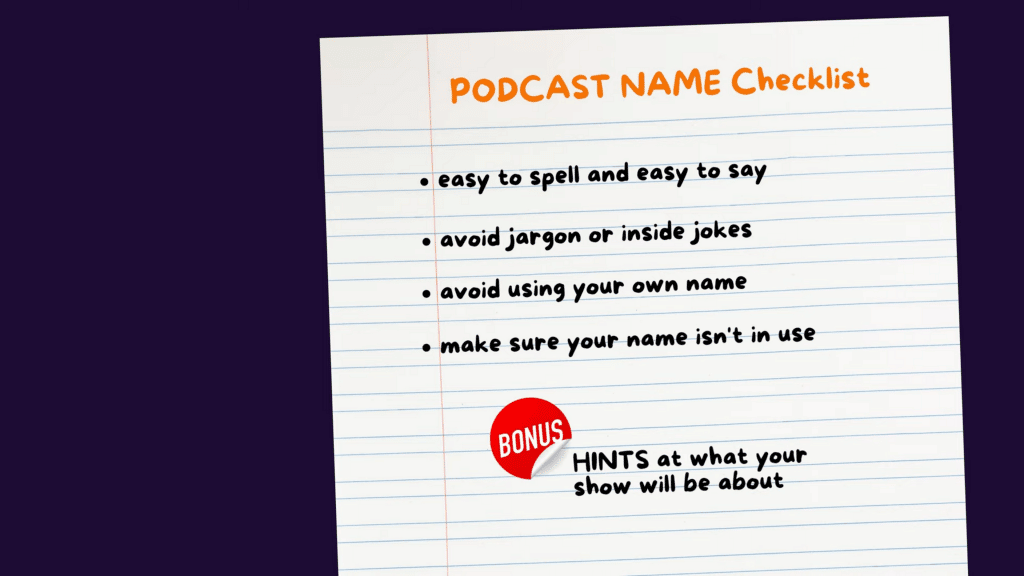
First, make sure your show name is easy to spell and easy to say
Avoid jargon or inside jokes only you would understand.
Unless you are a celebrity, avoid using your own name in your title.
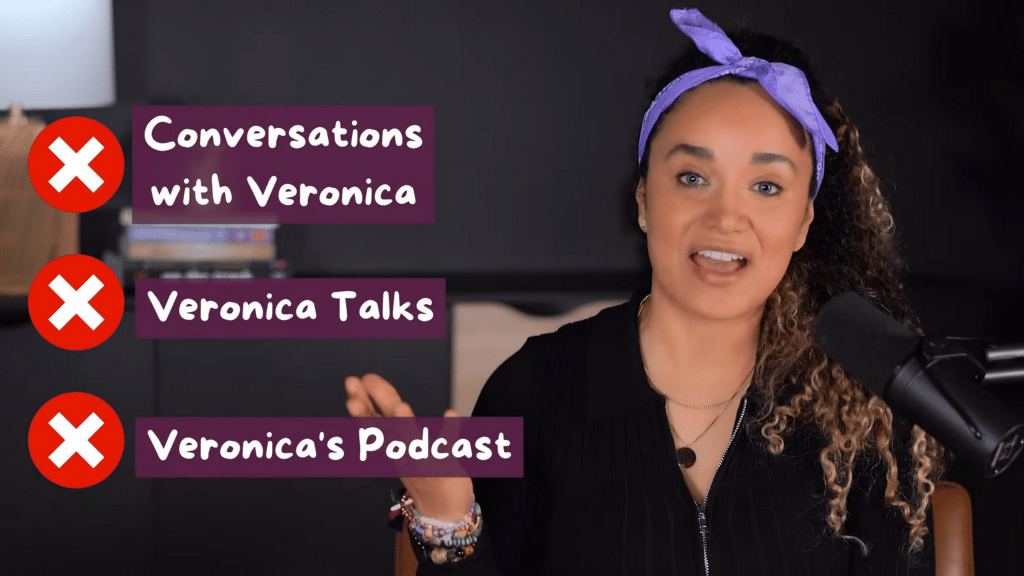
For example, if I name my podcast “Conversations with Veronica,”
“Veronica Talks,” or “Veronica’s Podcast.”
“Veronica’s Podcast” will not get the attention of podcast listeners browsing for new shows because they don’t know who I AM, and have no clue about what my podcast is about.
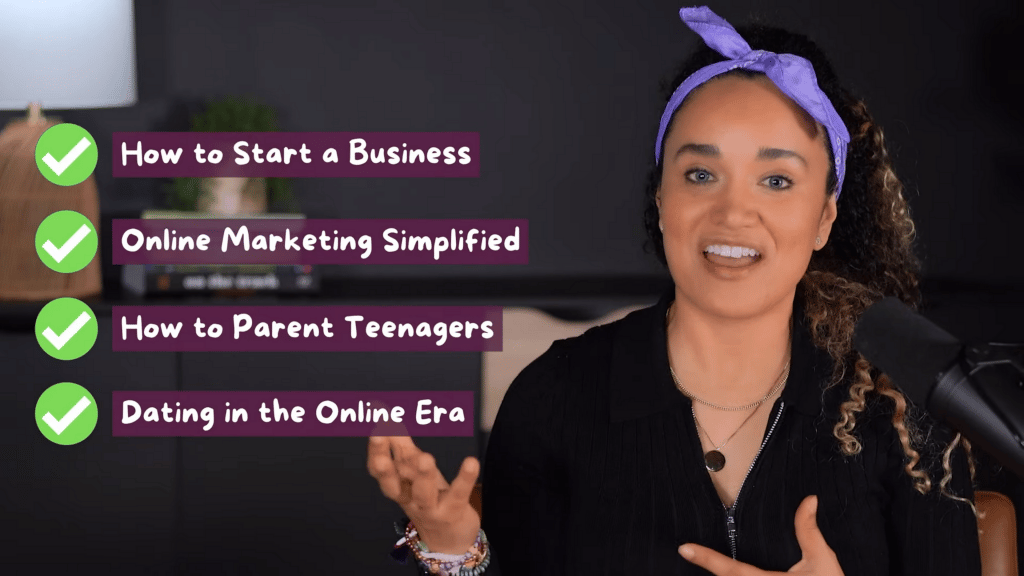
Descriptive names like “How to Start a Business,” “Online Marketing Simplified,” “How to Parent Teenagers,” or“ Dating in the Online Era” can help you catch the attention of new listeners interested in those topics.
And the last two items to scratch off:
- Do a check to make sure your name is not already being used
- Bonus points if your name hints at what your show will be about
Now, don’t put that pen down yet, you have more details to brainstorm, your podcast topic.
Let’s quickly create a list of topics that you can use to help develop your show and a handful of episode ideas.
If you have no idea, turn to social media and run a search using your main topic to see what videos and posts are being made with that topic.
This will give ideas about what to talk about and you’ll also be able to see what resonates with your audience the most.
OK, great work! Let’s not slow down and reveal STEP NUMBER TWO.
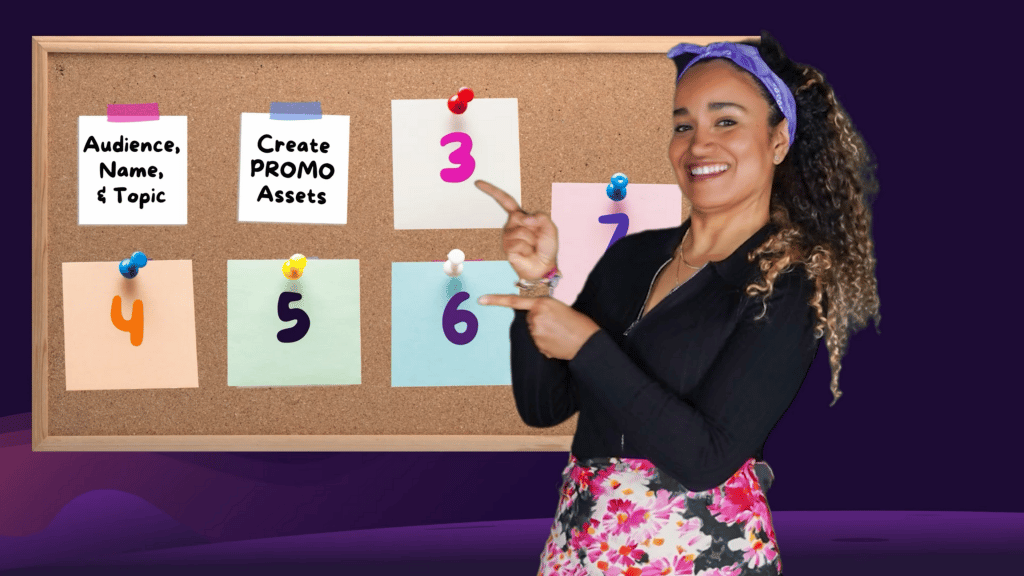
Step Two: Build your Podcast Brand and Create Promotional Assets
Your podcast is a digital product your audience will have access to and consume, as such, it should have proper packaging, a marketing strategy, and promotional materials.
Having this in place before releasing episodes will allow you to start promoting your podcast on social media, other podcasts, online communities, newsletters, and any other creative place you can think of.
You don’t want to wait until the day you launch your podcast to start promoting it.
NO. You start creating a buzz, being loud, and making noise weeks before your grand debut.
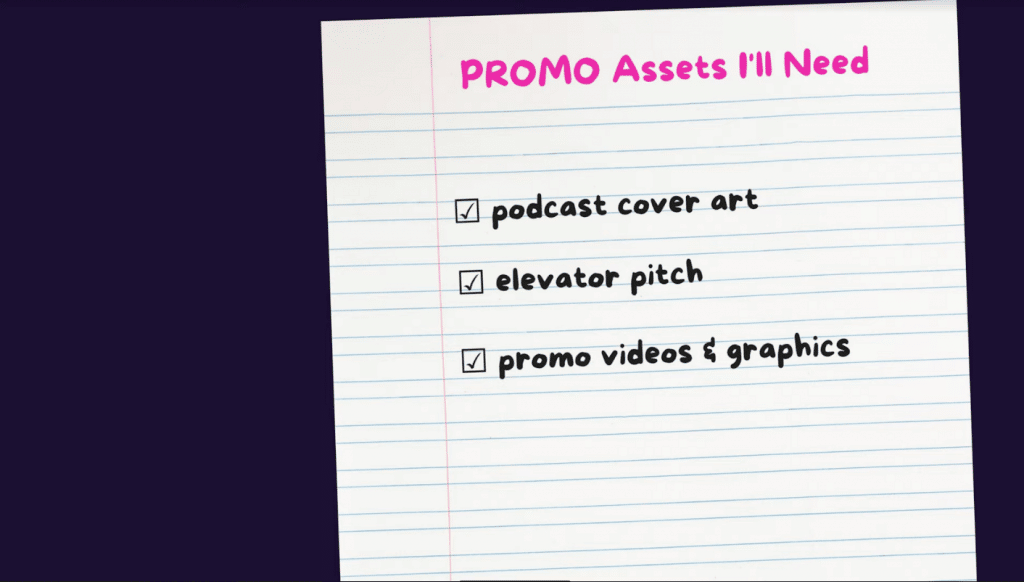
So this is what you’ll need:
- Podcast cover art
- Elevator pitch, and
- Promotional videos and graphics for social media
My favorite tool to create all this is Canva pro.
It’s like we were all confused, and Canva pro descended from the heavens to help those with no graphic design skills or taste like me.
In Canva pro, you can easily design your podcast cover art and all your promotional material for social media.
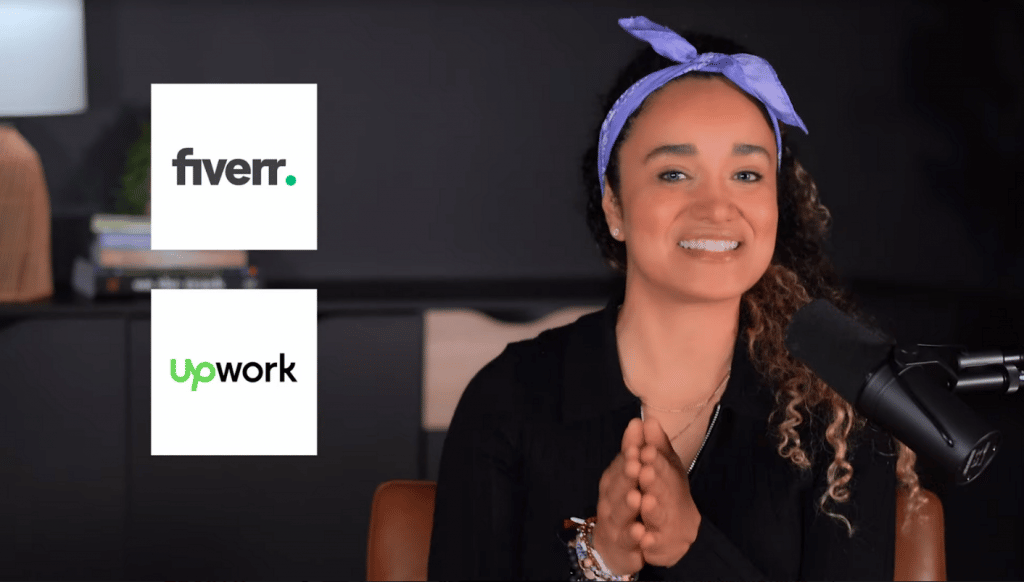
If you need extra help with your cover art, you can go to places like Fiverr or Upwork to find a graphic designer to help you with this task.
You’ll also need a little bit of writing to give people context about your podcast.
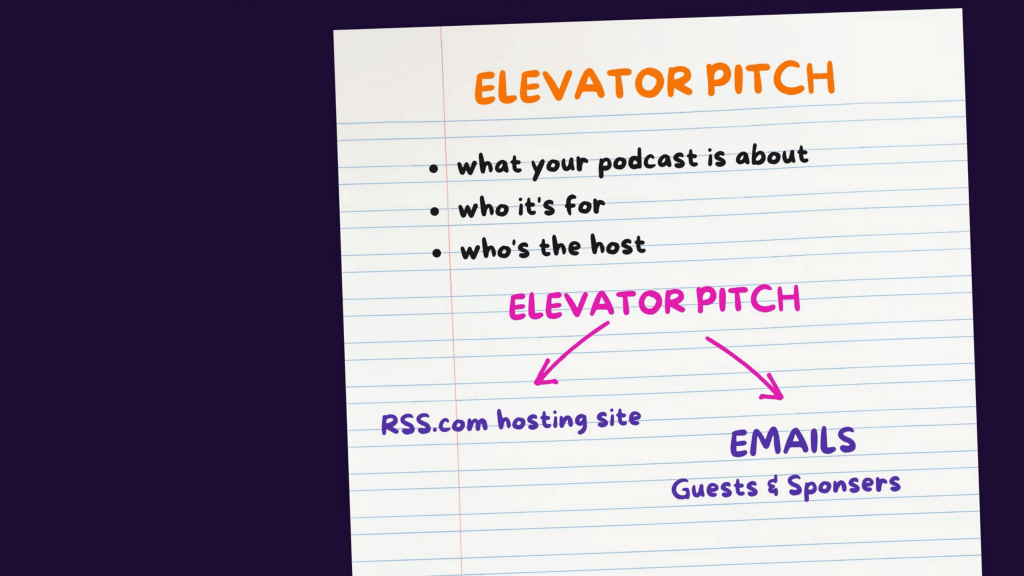
This is called a podcast elevator pitch.
A podcast elevator pitch is another important element of your podcast brand.
It’s a short paragraph describing what your podcast is about, who it’s for, and who the host is.
This piece of writing will go on your podcast hosting site ( which I’ll cover in a minute), your social media captions, your website, and in email communication when it’s time to pitch your podcast to be featured, to schedule guests, and to get sponsorships.
OK, you’re doing great! Let’s move on to step three.
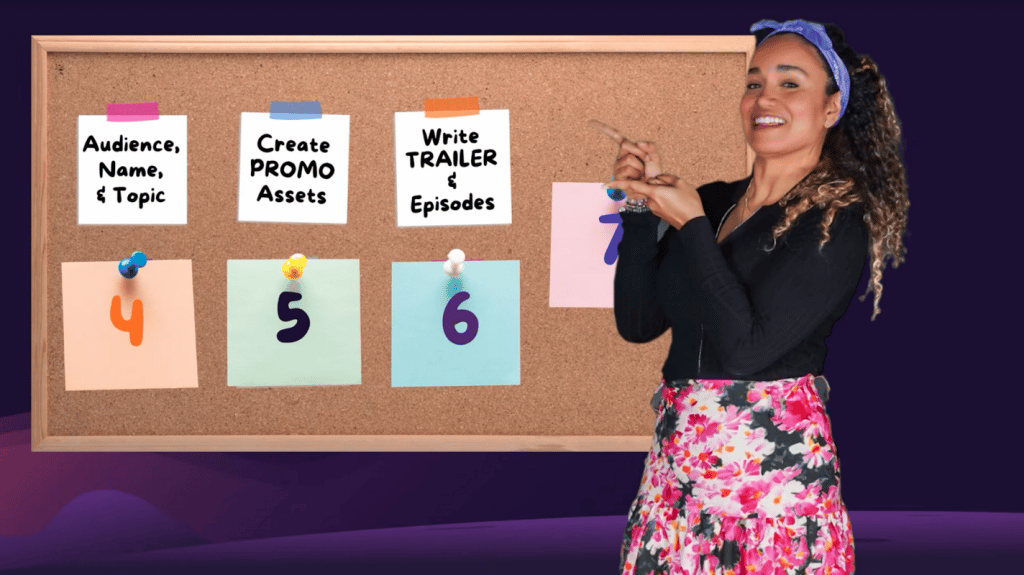
Step Three: Write Podcast Trailer and Four Episodes
Writing podcast trailers in my jam, ya’ll!
Writing scripts and outlines for your trailer and episodes is a different kind of writing … I’ll give you some tips on how to write in a minute.
But first, let’s talk about why podcast trailers are important and what you should include in your trailer.
Like a movie trailer, a podcast trailer gives the listener a taste of your show, creates anticipation, sparks interest, and gets people to talk about the upcoming release.
It baffles me when I see people launching their podcasts without using a trailer as part of their promotion strategy.
If mega film production companies, well-known worldwide, like Disney and Universal, use trailers for their upcoming releases, why wouldn’t you do it for your brand new show?
Go all in with your project. You’re a star, and this is your moment to shine.
So what should you include in your trailer? Good question.
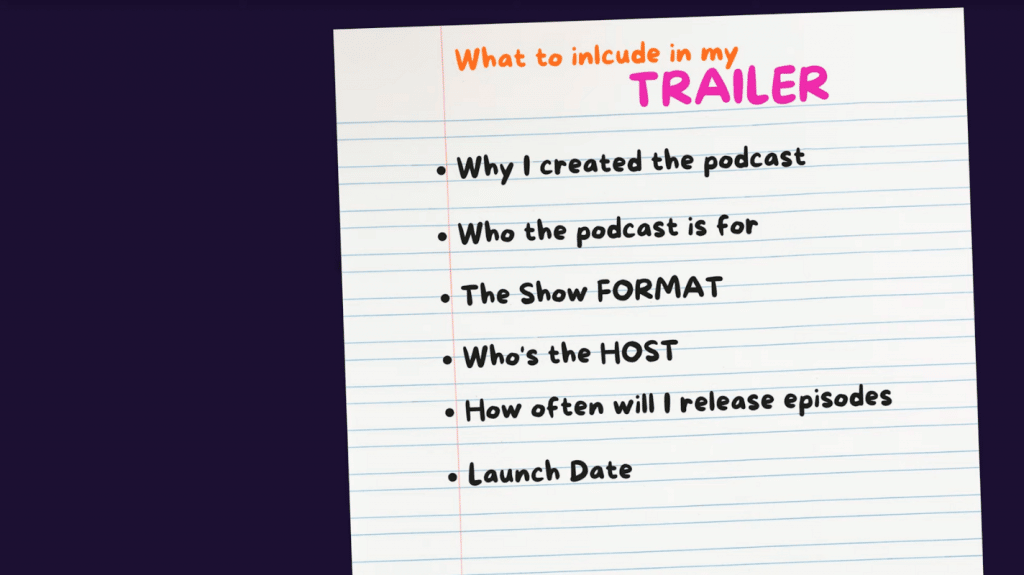
In your trailer, you will include:
- Why you created the podcast
- Who the podcast is for
- The podcast’s format
- Who is the host of the podcast
- How often episodes will be released, and
- Your launch date
Oh, and I almost forgot, having a trailer is important because you can use it to submit your podcast to the podcast directories before your launch date.
You can also use your podcast trailer to promote your podcast and create anticipation.
A tip for when you’re creating your trailer is to write it out word for word.
Remember, your trailer is supposed to be short and to the point.
The less you ramble, the better.
And while you’re in writing mode, you can create outlines or scripts for your first four episodes.
It’s always a good idea to launch with a couple of episodes and have a couple more in your queue, so you’re ahead of your production schedule.
Alright, we’ve passed the halfway mark and you’re doing awesome!
Let’s move on to step four.

Step Four: Record Podcast Trailer and Episodes
For this step, you need two things, equipment to record your podcast and recording software on your computer so you can record your voice.
Let’s talk about equipment first.
There are many options for podcast equipment, but I can assure you, you can find the right equipment for your budget and preferences.
If you’re new, I’d recommend starting with a simple setup using a USB microphone so you can plug it directly into your computer and start recording.
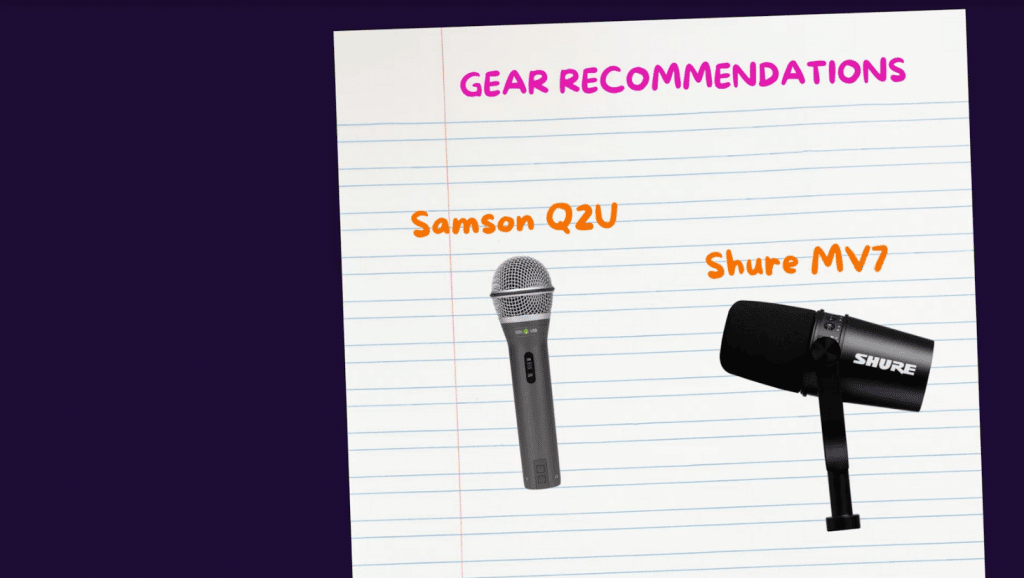
I recommend the Smason Q2u or the Shure SM7V.
These two are great options! You’ll also need a pair of studio headphones to hear the details and what your voice sounds like as it’s being recorded.
When it comes to recording and editing your podcast, this is where many people become overwhelmed.
Don’t worry, you just have to choose an Audio editing app or computer program, and start practicing.
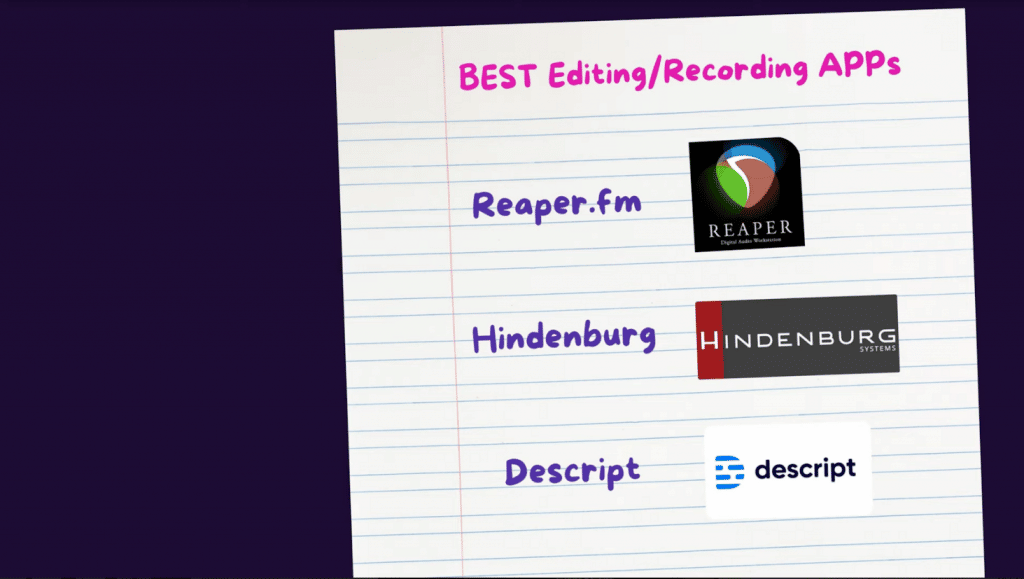
My recommendations for the best audio recording apps are:
Since this is the first time you’ll be recording a podcast, it’s a good idea to give yourself plenty of time to relax and go through the process.
Podcasting is like anything else in life.
The more you record, the easier it gets, and the more your performance will improve.
Ready? Great! Let’s move into step number five.
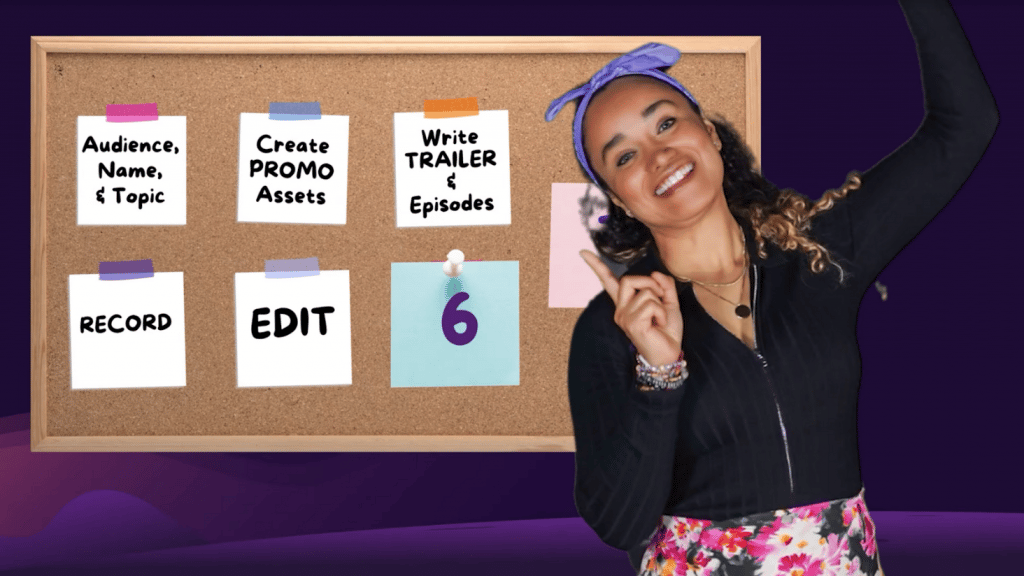
Step Five: Editing Your Trailer and Episodes
After you’re done recording, it’s time to edit your raw recordings to add to the listeners’ experience and to make the episode broadcast ready.
In the editing stage, you can remove filler words to make you sound more articulate.
You can remove unnecessary banter and irrelevant information.
You can also add music and sound effects to your podcast to enhance the experience.
Audio production can be tricky, especially if you’re unfamiliar with audio production.
But don’t let this deter you from starting your podcast.
Let’s go over some options together.
You can choose to edit your own podcast, and in that case, you’ll have to learn podcast editing.
The other option is to hire a podcast editor.
With a podcast editor, the only thing you have to worry about is getting high-quality recordings that your editor can transform into an immersive audio experience.
Let’s jump into number six!
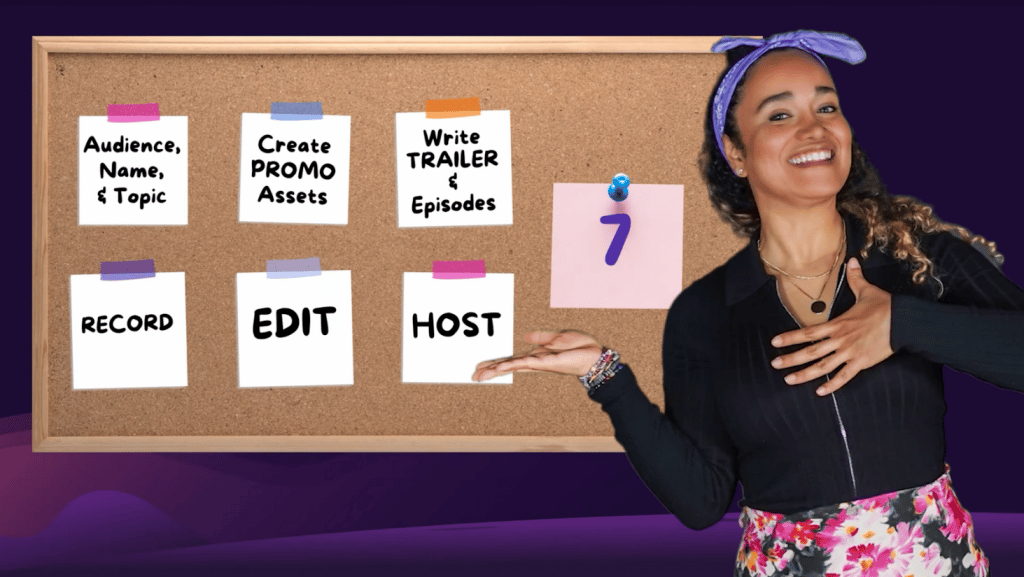
Step Six: Hosting and Distribution with RSS.com
After you have created all the assets that you need for your podcast its time to upload them to RSS.com.
The first step is to enter your email address and set your password to create an account with RSS.com.
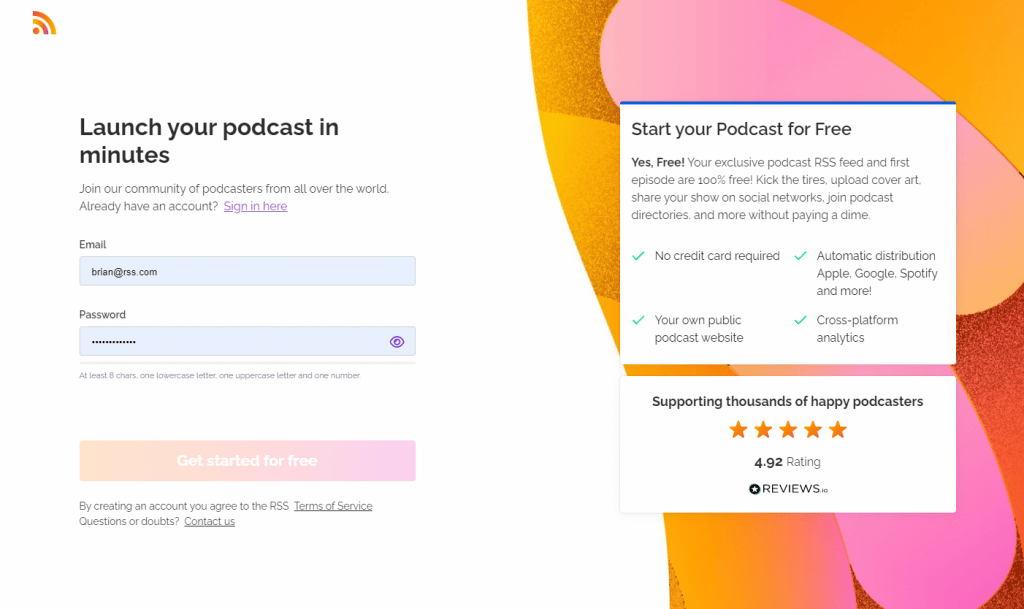
You can get started with this step for free with no credit card information needed.
Once you’ve chosen a password, click “ get started for free.” You’ll get an email to validate your account with RSS.com with a six-digit code.
And the next step is to click on “new podcast.”
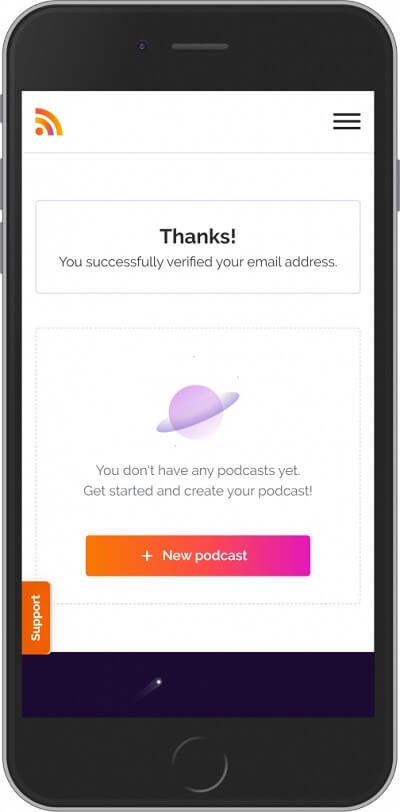
This will take you to a new page where you’ll enter your podcast title and description and upload your podcast cover art.

You’ll also be prompted to add additional information about the podcast, and finally, you can upload the audio files of your trailer and episodes.
You can decide to publish the trailer and episodes right away, or you can schedule them to be published at a later time.
It’s that simple to start a podcast! So in minutes, your podcast will be LIVE and ready to be shared with the world.
Also, with RSS.com it is super easy to set up automatic distribution to Spotify, Apple Podcasts, Google Podcasts, Amazon Music and all of the other major podcast players.
All you need to do is upload one episode and click this button/toggle in your RSS.com account.
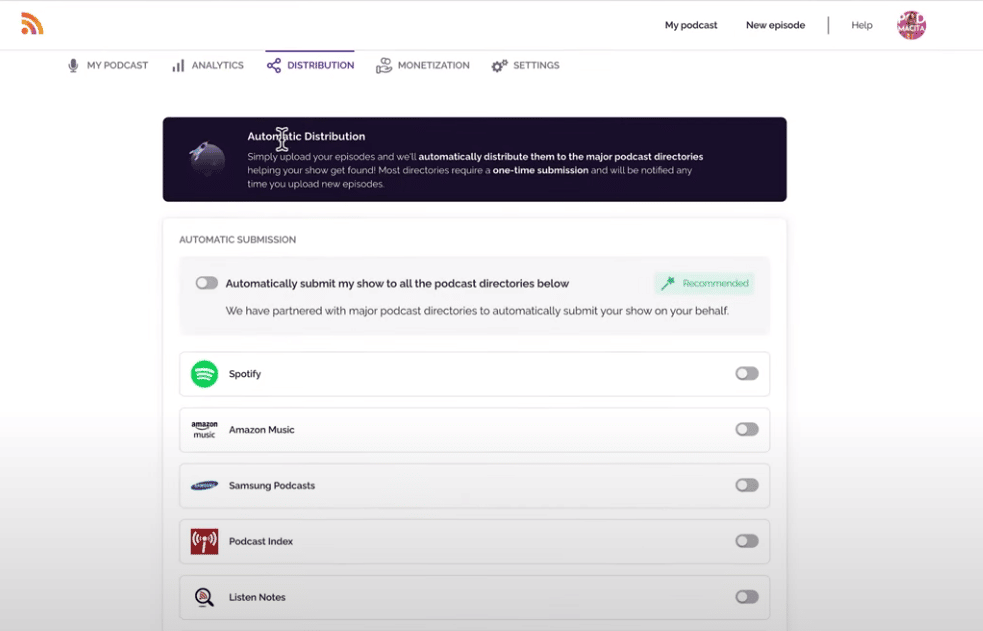
Enabling automatic distribution will put your podcast in front of a massive audience. (Spotify alone has 32.5 million monthly podcast listeners.)
Okay. We’ve made it to the last step. Let’s reveal step number seven.
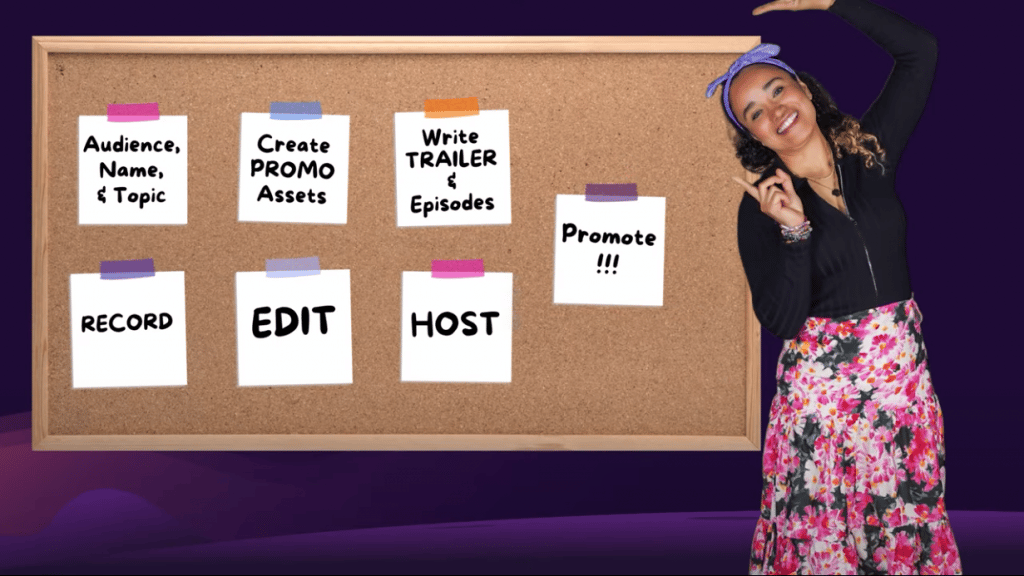
You don’t need an elaborate marketing plan, or to study marketing books, or hire a marketing team.
The only thing you need to do is to share your passion and enthusiasm about your new podcast every day in any shape or form.
You can:
- Make short videos for social media
- Talk about your podcast on IG stories
- Send emails to your newsletter subscribers
- Contact publications and ask to get featured
- Be a guest on other people’s shows
- Send cold emails and messages
- Reach out to the local news station …
Basically, do whatever comes to your mind to get the word out.
You don’t have to do all of these things.
Pick the strategy you feel most comfortable with.
If you’re an introvert, maybe sending emails or direct messages on social media is your best form of communication.
If you like conversing with people, then being on other podcasts can be a great idea.
The key is to share your podcast with at least one person every day until it becomes a habit.
Promoting your podcast never stops.
You will promote your podcast when you’re planning it, when you’re producing it, when you launch it, and every time you release a new episode.
This is how you create a magnetic podcast that will continually draw new listeners in and keep them coming back.
And that’s it my friends.
Start thinking about what ideas you have for your show.
And, if you need any help RSS.com is here to help you every step of the way.
📘 Related Reading
- Get even more tips on how to choose a name for your podcast.
- Get more great tips on creating a compelling podcast trailer.
- Read more about choosing the best podcasting microphone.
- Learn how to record and edit a podcast episode.
- What are the best headphones for podcasting?
- Get more actionable tips on how to brand your podcast here.
- Learn how to make an engaging podcast cover.
- What is the best podcast editing software?
- How to promote your podcast on social media.

